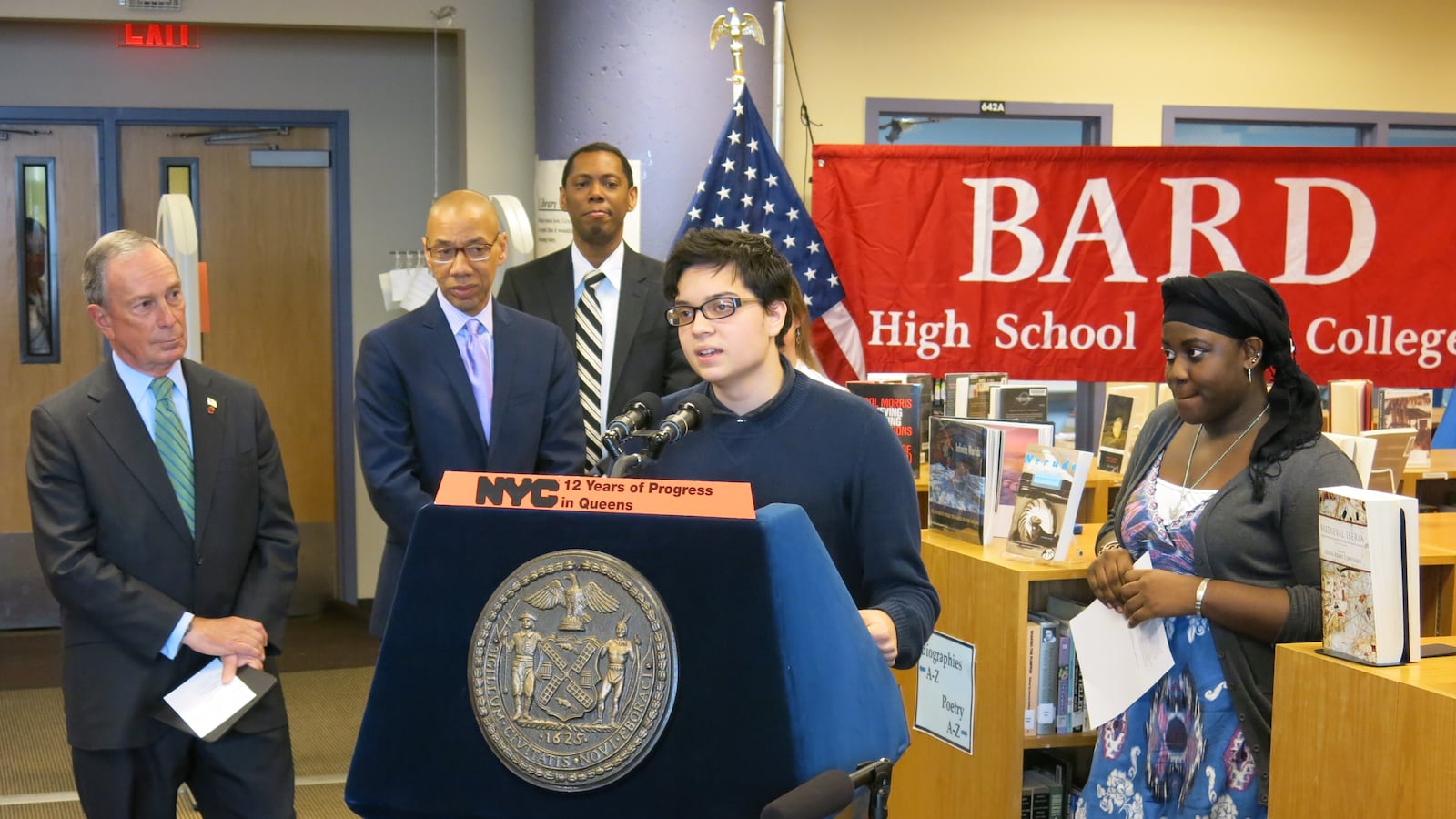New York City’s small high schools are doing a better job than other schools at graduating their students, and they’re also sending more of them to college, according to a new study.
The research nonprofit MDRC found that 49 percent of students who entered a small high school between 2004 and 2007 enrolled in a four-year college, community college, or technical school, compared to 40 percent of similar students who attended other schools. Black males and poor students saw the biggest jumps in college enrollment.
The research enters an ongoing debate about the best model for high schools as the small-schools movement has recently lost much of its luster nationwide. The findings, celebrated by former city officials on Thursday, also became a proxy battle for the future of the city school system—now overseen by Mayor Bill de Blasio, a forceful critic of the school closures that made the small schools possible.
The findings come from the fourth installment of MDRC’s research on the city’s small-schools movement. The multi-year study examines a subset of 123 “small schools of choice” that opened between 2002 and 2008 with private funding from the Bill & Melinda Gates Foundation and support from former Mayor Michael Bloomberg’s administration.
MDRC’s research focused on schools that were oversubscribed and admitted students through a lottery process, which in its first year included 105 schools. The lotteries enabled researchers to compare what happened to admitted students and similar students who “lost” the lottery and wound up attending mostly older, larger schools—a structure considered the “gold standard” in education research.
Earlier MDRC research has showed that the city’s small schools graduated more of their students than bigger high schools in their first years. Those findings spurred the growth of small schools in the city, even as similar experiments posted mixed or negative results in other cities. The Gates Foundation, which funds MDRC’s research, put $150 million into the city’s small schools before ending its small-schools giving in 2008, citing students’ low college-readiness rates. (Chalkbeat also receives funding from the Gates Foundation.)
The small schools also save taxpayer dollars by graduating more students within four years—about 15 percent per graduate less than other high schools, according to an associated paper.
Former schools Chancellor Dennis Walcott called the findings a “powerful validation” of Bloomberg’s strategy on Thursday. And critics of Mayor Bill de Blasio used the opportunity to point out that the current administration has not yet laid out a clear vision for helping the city’s struggling schools.
“This study could not be more clear,” Walcott said in a statement sent out by Bloomberg’s former chief spokesman Stu Loeser. “Our small schools initiative has been an incredible success.”
Not all small schools opened under Bloomberg were runaway successes, though. Some have already been shuttered for low performance, and even proponents note that a school’s size is no guarantee that it will thrive.
Robert Hughes, president of New Visions for Public Schools, an organization that opened and supported many of the schools included in MDRC’s study, said the schools succeeded because they had strong ties to the community, collaborated with the teachers and principals unions, and high-quality staffs that shared leadership responsibilities.
“I think it would be easy to assume it’s solely a victory of the prior administration,” Hughes said. “It’s certainly an endorsement of the small-schools strategy, but the report underscores how key factors that made them effective, and that are now promoted by Mayor de Blasio — particularly his focus on community schools with integrated services — are critical for every school’s success.”
Some researchers questioned whether the findings should be seen as a definitive endorsement of small schools in general. Because the research examined only small schools that had more applicants than seats — by definition, the popular small schools — the lowest-performing small schools may not have been included at all.
The study also didn’t look at all of the small schools opened during the Bloomberg administration. An additional 93 small schools opened from 2002 to 2008, but were left out because they were either academically selective, transfer schools, or combined middle and high schools.
“Would the same thing hold up if they looked at the whole small-school sector?” Norm Fruchter, a senior policy analyst for the Annenberg Institute for School Reform and a mayoral appointee to the of the city’s Panel for Educational Policy. “I think if we were looking at all small schools, the outcomes might well be worse than what the MDRC study found.”
A city spokesperson did not dispute the study’s findings, but suggested that the Department of Education under Chancellor Carmen Fariña would look to offer greater support to larger high schools, which received less attention and were often targeted for closure under Bloomberg.
“We are committed to ensuring that all of our students — attending high schools of all sizes – graduate on time and are successfully prepared for college and career,” said the spokesperson, Devora Kaye.
Read the full report here:

